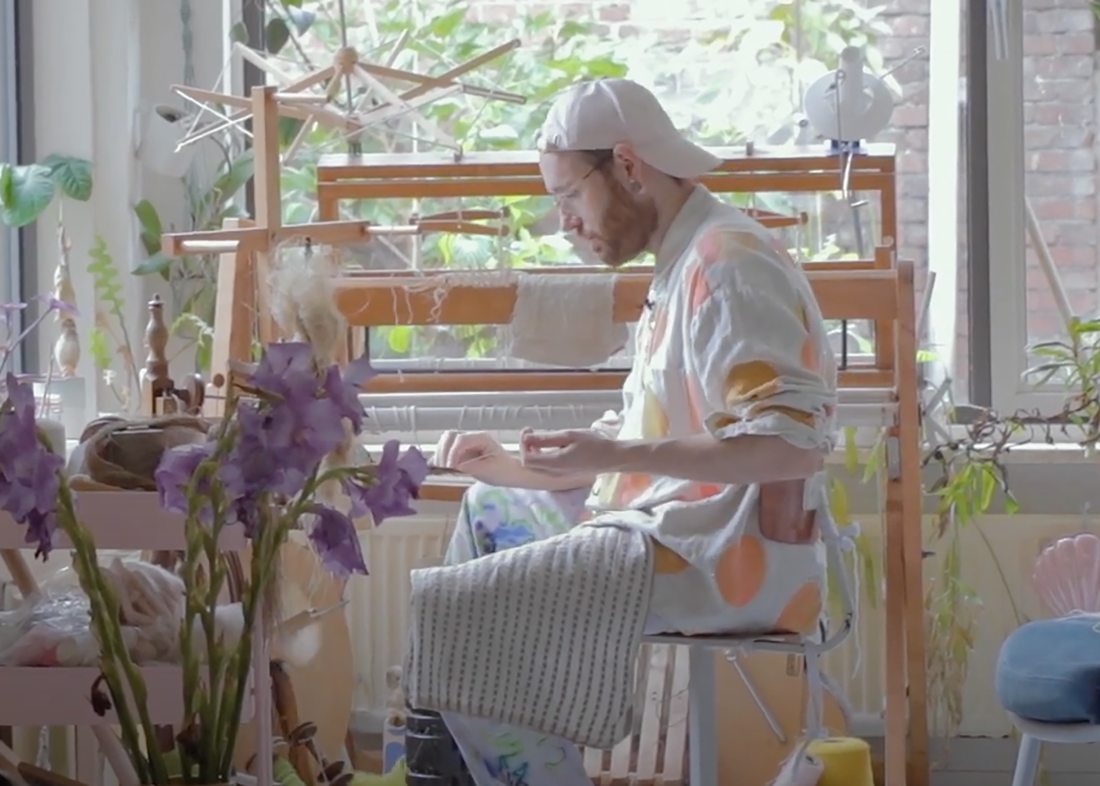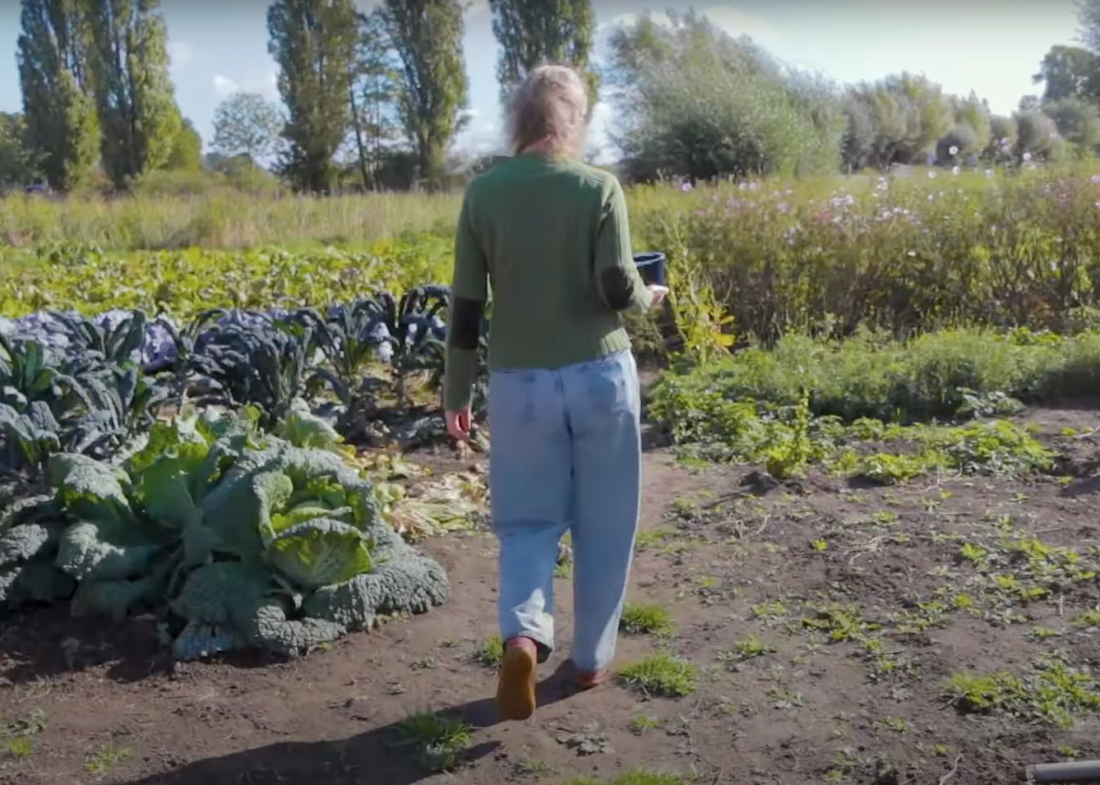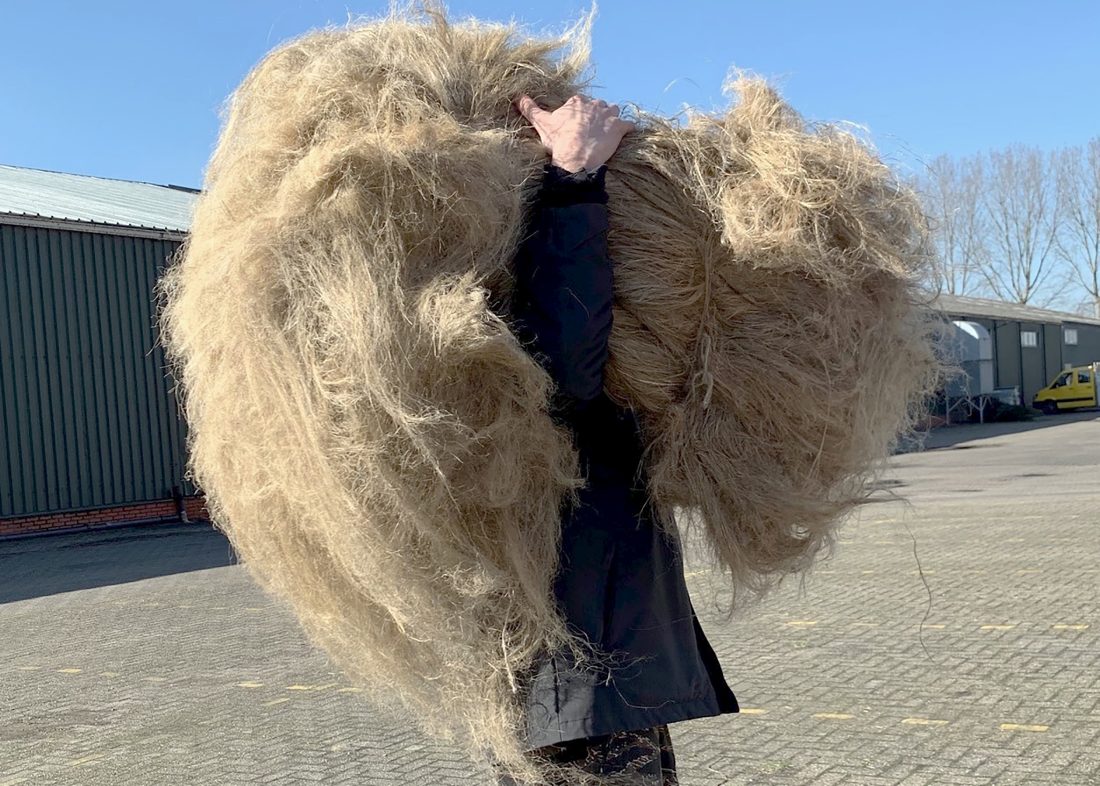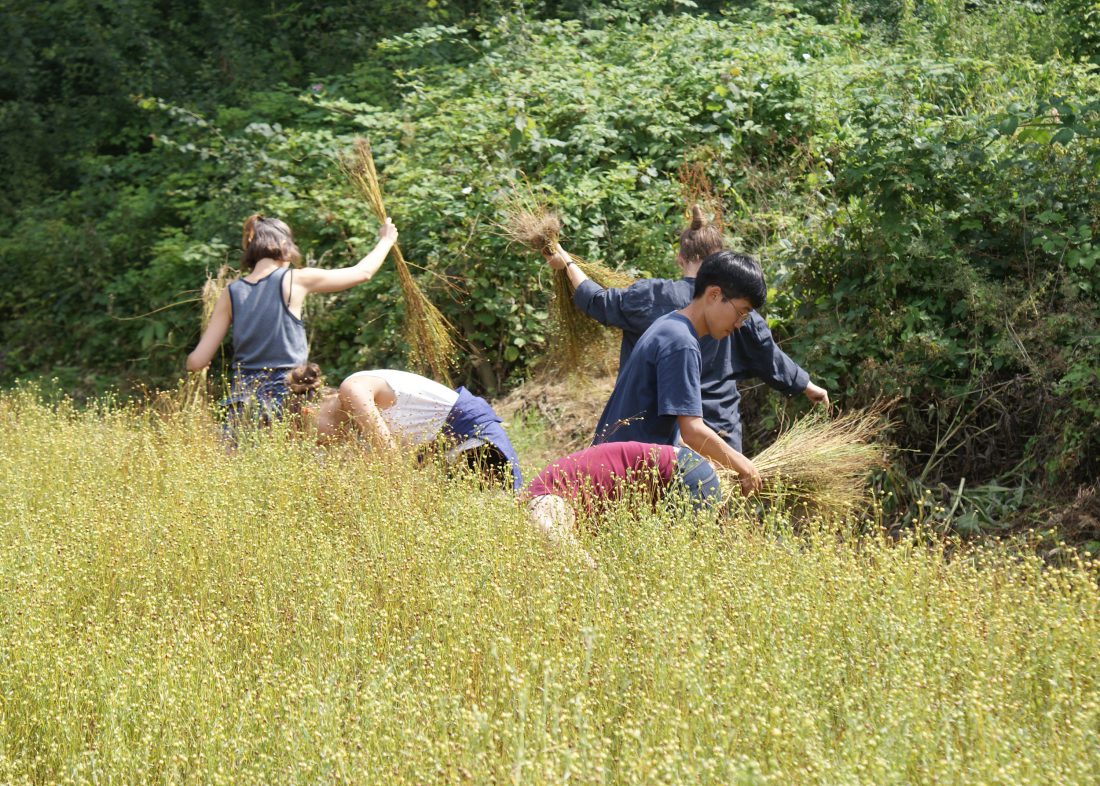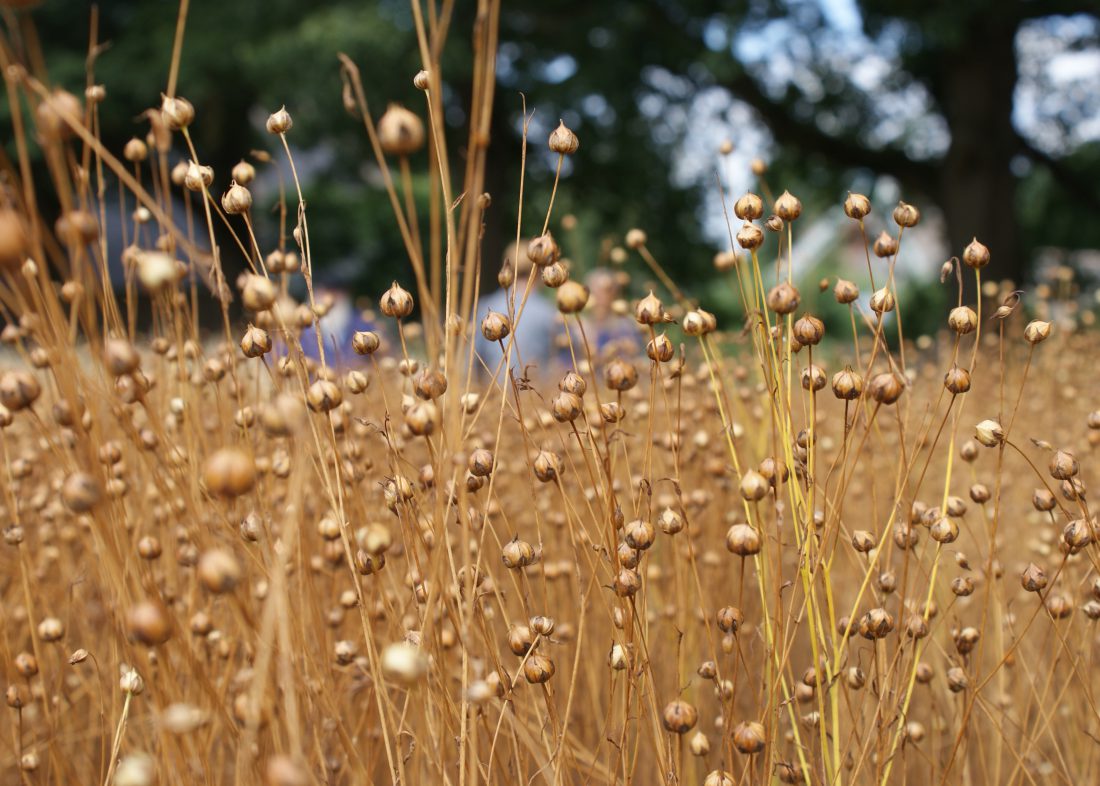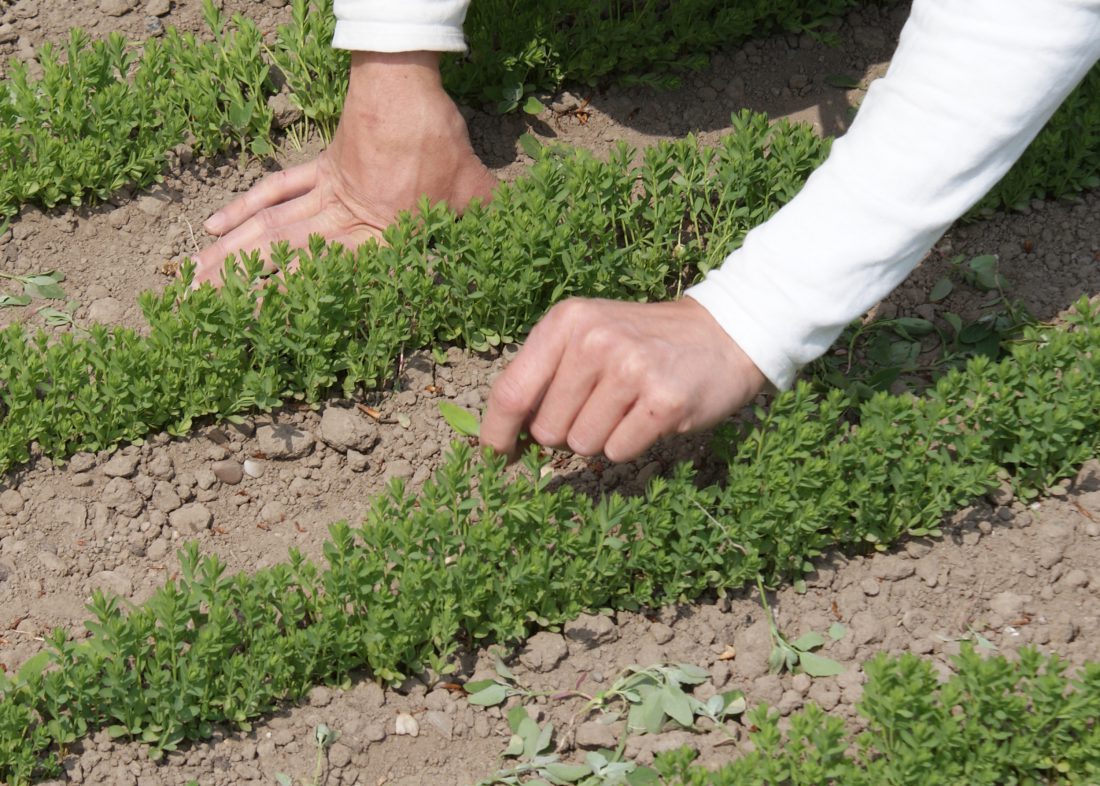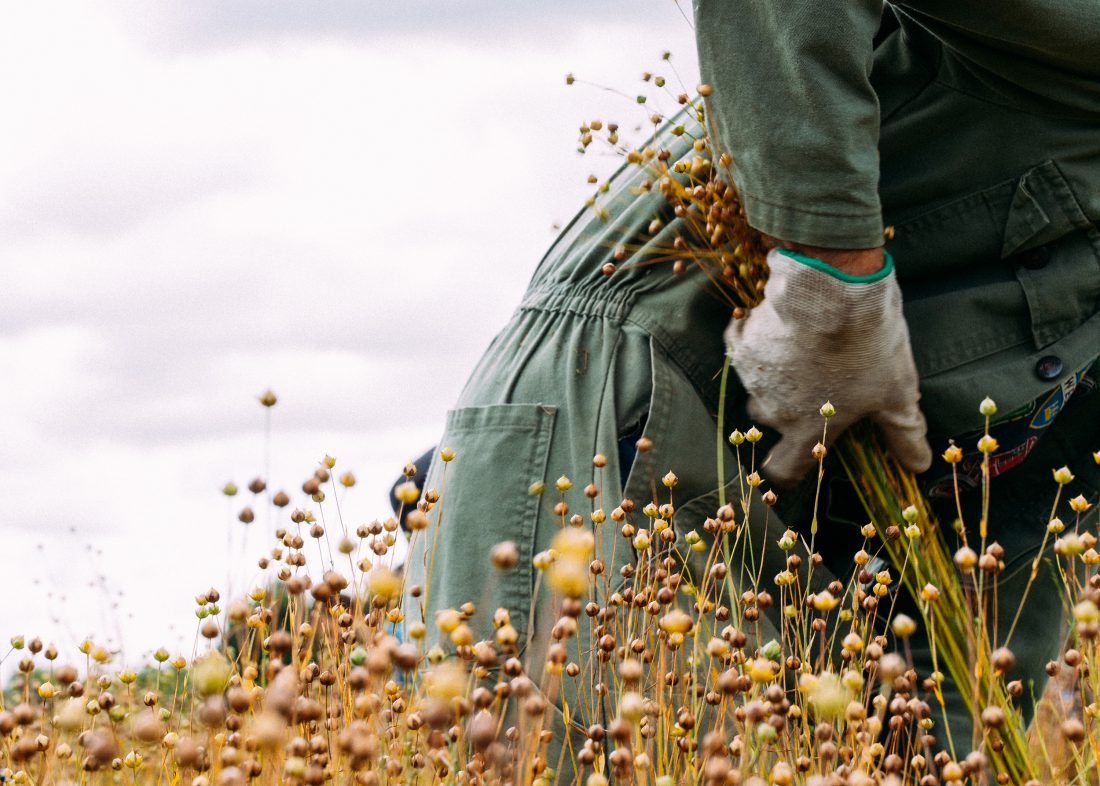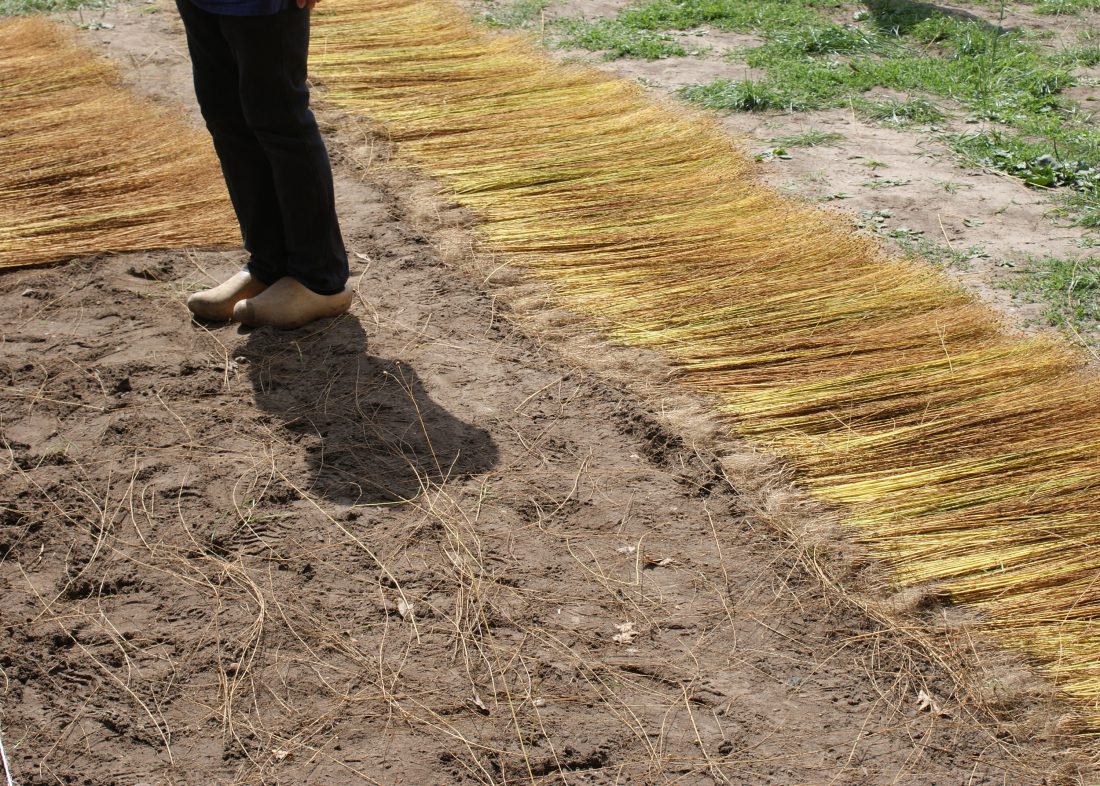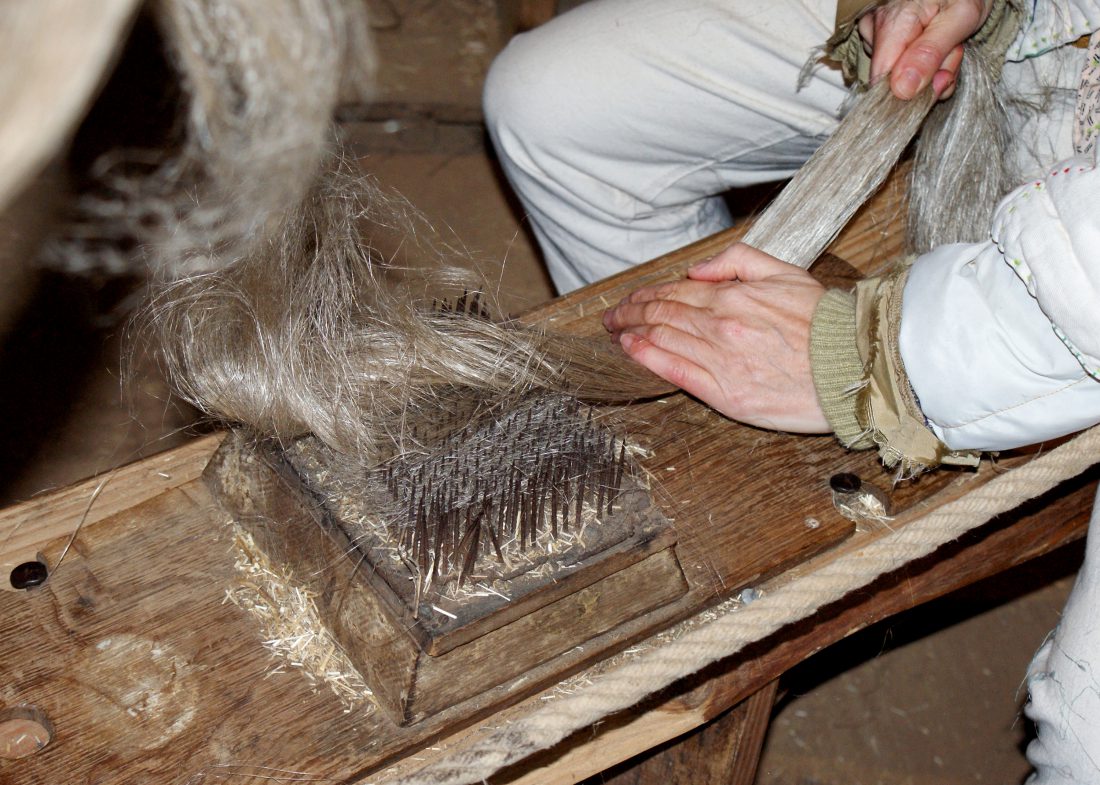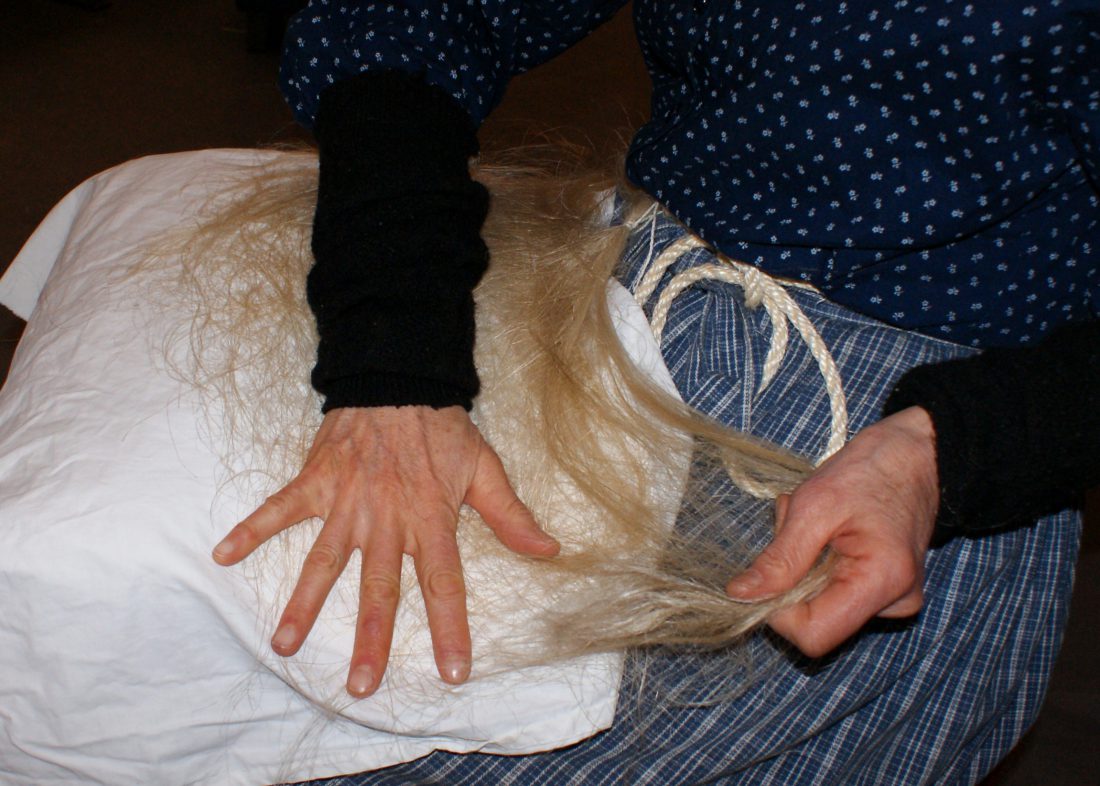The production and use of flax and linen span branches of knowledge and practice, with local and international resonance. The flaxicon – an archive of (textual) resources generated by The Linen Project’s activities so far – gives insight into related processes and perspectives, their application, and significance.
videos
Hans Hutting and The Linen Project
Hans Hutting, independent fashion designer and Linen Steward, talks about how participating in the Shared Stewardship and working with flax and linen intertwine with his creative practice. Video profile by Theodoor Adriaans for The Linen Project in collaboration with the Research Collective for Decoloniality and Fashion. Spoken in Dutch with English subtitles.
Karin’s Flax Garden
Karin Wijnen, independent researcher and Linen Steward, shares her embodied exploration and appreciation of the processes involved with growing and preparing natural dyes and fibres. Video profile by Theodoor Adriaans for The Linen Project in collaboration with the Research Collective for Decoloniality and Fashion. Spoken in Dutch with English subtitles.
Industrial Flax Processing at Van de Bilt zaden en vlas bv, Sluiskil
A group of the Linen Stewards visit flax specialist Van de Bilt Zaden en Vlas bv in Sluiskil, to explore the process of having flax produced by their collective harvests in 2020 and 2021 industrially scutched and heckled. Lenno Vermaas and Bart Depourcq share insight into the company’s operations and the flax-growing regions of the Netherlands. Spoken in Dutch with English subtitles.
The Linen Project x HOW&WOW Linen
An introduction to The Linen Project and its activities, including the steps traditionally involved from flax seed to linen thread, part of the video series HOW for the online exhibition HOW&WOW Linen. The full series is now available to view in the flaxicon. Starting with the seed that eventually transforms into the striking blue flax bloom and following the process in which terms such as rippling, dew retting, scutching and hackling tow at once take on meaning.
This video series was made in collaboration with Karlijn Bokhorst and Heleen Lorijn, in conversation with Theodoor Adriaans.
Seed and Sowing
Weeding
Karlijn Bokhorst, flax cultivation supervisor for The Linen Project in 2019 and 2020, talks about the importance of weed removal and exploring organic farming methods. The Linen Stewards weed by hand – bringing a connection with the soil, the flax and each other – on location at their flax field at Ekoboerderij de Lingehof.
Pulling the Flax
Retting and Turning
Bringing in the Harvest
Rippling, Breaking, Scutching, Hackling
Heleen Lorijn is experienced in historical flax and linen practices and grows her own flax to research and conserve the haptic knowledge involved. Here she explains and demonstrates how fine flax fibres and other materials are extracted from the harvested flax stalks through various manual techniques.
Preparing the Distaff and Hand Spinning
Once the flax fibres have been obtained, they are prepared for spinning. Flax expert Heleen Lorijn gives a workshop in ‘dressing the distaff’ to the Linen Stewards and demonstrates her preferred hand spinning and finishing techniques. The difference between the flax fibre qualities and their customary use is also explained.
research reports commissioned by the linen project
Making a Transition Towards Local Linen
In preparation for the 2019 flax cultivation season and with a view to future activities, The Linen Project commissioned an advisory report via the Wageningen University & Research Academic Consultancy Training programme, exploring the possibility and the viability of local (biodynamic) flax production in the province of Gelderland. Team ReFlax delivered a concise orientation on the potential challenges and opportunities involved, including advice on best practices for flax cultivation specific to the region and the selection of seed varieties that season.
The Effect of Soil Type and Its Water-Retaining Properties on the Development of Fibre Flax
The Linen Project commissioned intern Eveline Nales to investigate the relationship between flax development, the availability of water in the soil, and the organic matter content at our flax cultivation locations in Arnhem and Hemmen in 2021. An exceptionally wet growing season resulted in the plants on both plots experiencing little water stress. Through regular field visits, other notable variables and their possible impacts were observed. Eveline’s research findings are summarised in this Bachelor Thesis report.
articles
Karin Wijnen’s flax research is an ode to diversity and curiosity
Karin Wijnen’s flax research is an ode to diversity and curiosity
Text: Iris te Wieske
Photography: Fan Liao
On a small piece of land behind the old church in Oosterbeek, Karin Wijnen’s flax will soon germinate again. Last year she sowed six varieties of flax here. That brought her not only a beautiful collection of diverse flax stricks, but also a growing love and fascination for the process. I spoke with Karin about her work, which resulted in a story about endless possibilities, curiosity and creativity.

A house filled with love
I meet Karin at her home in Oosterbeek. The walk there is a joy in itself. It is cold but sunny as I walk along a wide street full of old trees toward her house. I hear a woodpecker that stops when I pause for a moment. At Karin’s home you immediately feel the love for and dedication to her work. There is a lot to see. I follow her to the living room where several hecklers hang on the wall. Wooden boards with iron pins, used to comb the flax fibers. As I study them, Karin shows me her flax break. Karin: ”You use it to break the wooden core of the flax stalks.”
In the kitchen, the table is covered with books about textiles. At the edge of the table a bowl with hand spindles. To spin with, Karin explains. As she pours us a cup of tea, I tell her I haven’t held flax in my hands before. She grabs a sturdy linen cloth, rolls out the braided flax stricks of her research, and places them between us on the table. Karin: ”I also like to be able to see and feel the material when I talk about it.”
The fact that Karin is now working with flax, is a coincidence. After studying musicology and a career on the flute, a search ensued. That search ended in cheese making. Karin: ”I wanted to make cheese the traditional way. With the living cultures of healthy cows, standing in a biodiverse pasture where all kinds of things grow. As I was learning that, I wanted to have cheese cloths. You used to have cloths from nettle. I liked that so much. If you use the fungi and bacteria from the environment for the cheese, you want a cloth that has contact with the environment, right?”
I wonder if nature has always been so important to her. Karin: ”I always loved being outside. I liked walking more than cycling. The slower, the more I could look around. I preferred to stand still everywhere. With cheese making, it was mainly the miraculous that fascinated me. Flax has that wonder too.”
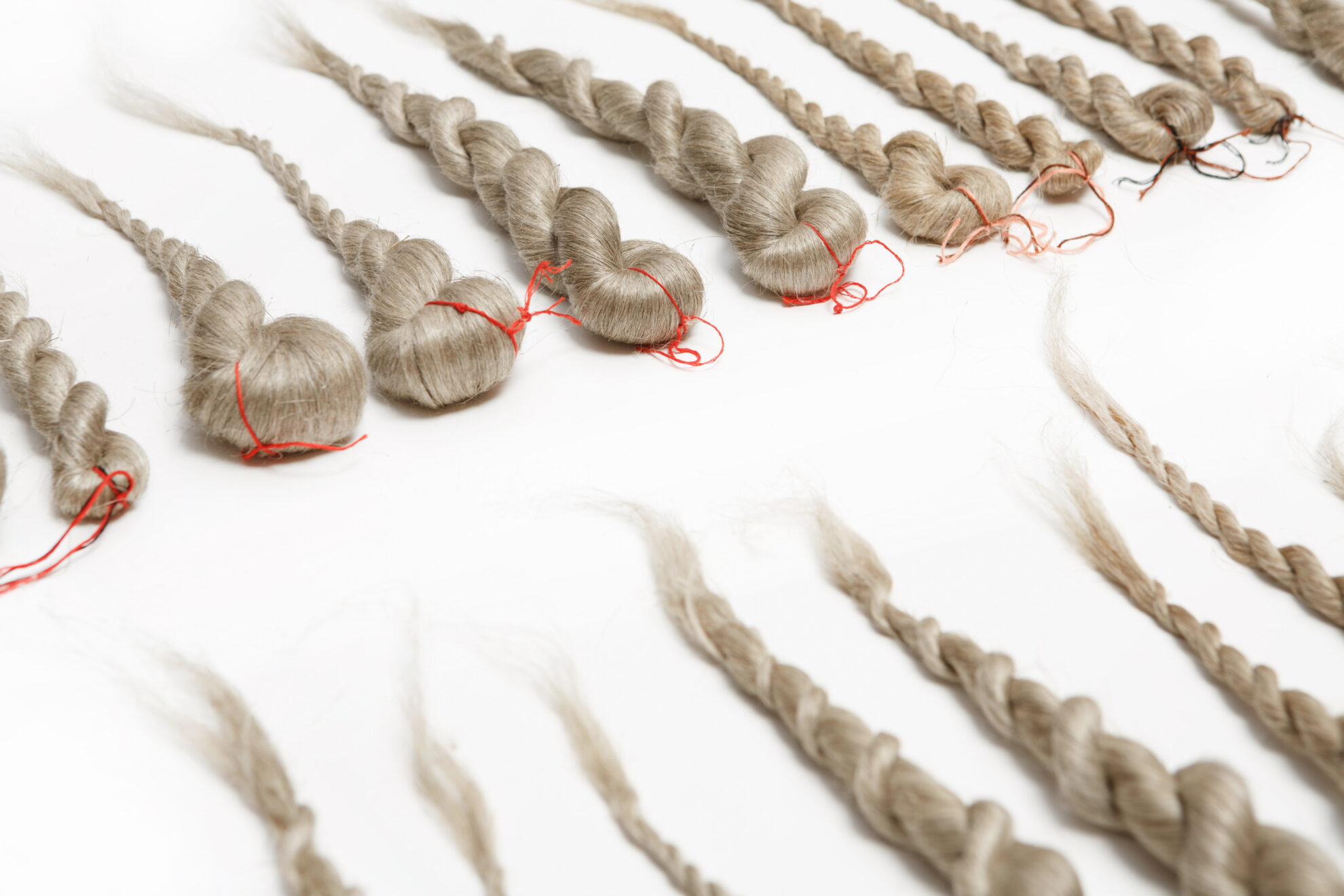
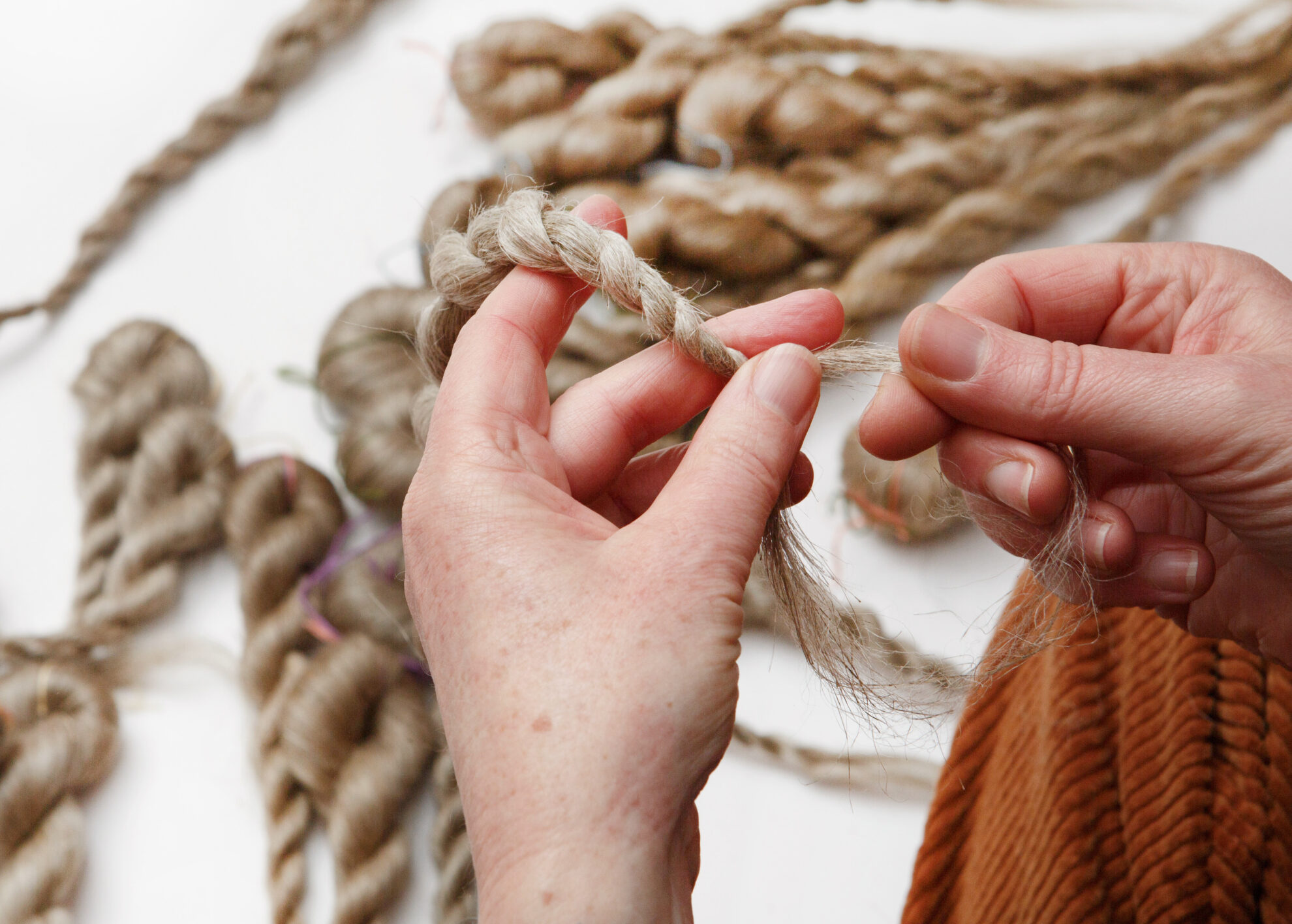
The first seed
When a call for Linen Stewards came up at the Horsterhof (an organic farm in Duiven), Karin didn’t think twice about joining. It may not have been nettle, but it was similar. Because of corona, cheese making disappeared into the background, but the (flax) seed was planted. That seed turned out to be a study in itself. Karin: ”The commercial seed I use comes from Van De Bilt (a specialist in flax fiber and seeds) in Zeeland. From the beginning of the 20th century, seed was also bred in Friesland. That seed breeder is no longer there, but a group of people went to seed banks to look for seeds that were bred in Friesland at that time.’’
Karin explains that nothing happens to the seed in the seed banks. The seed is kept there to be used someday. Karin: ”In Friesland, they want to re-seed it every year to extract new seed. At a seed bank you get a very small amount of seed, but from this group we could buy a larger amount. That’s what we did with the Linen Stewards.”
After two years as a Linen Steward, she gets the chance to work on a small plot of land behind the old church, on the outskirts of Oosterbeek. Karin: ”You want to be able to stop by the field every day to see how things are going.”
The research on her own piece of land also began with the seed. Karin: ”I was interested in the types of seed I could use. That was because of a woman in Portugal, Alice Bernardo. She discovered that the seed that is available now, is very different from the seed that was used in Portugal in the past. The flax she sowed stayed a lot shorter. The scutching mills of today were not suitable for the shorter flax she grew and that got me thinking. We now have a type of flax in the Netherlands that has been selected for today’s mechanical processing. That intrigued me. How are choices made for certain seeds and if I had the opportunity could I not go for other flax? What qualities would I look for? That’s why I wanted to sow several varieties.”
You can find more about Alice Bernardo’s work here.
She recently received a grant to continue her project GatewayCrafts.
Have it both ways
In her research, Karin comes across all kinds of remarkable sources. She recently found a Dutch cultivation manual from 1809. Because of the war with France, fine French linen was not available at the time. However, there was a demand for it from the government. Thus began an inquiry into what made French and Belgian linen so different. Karin: ”A report was made, which was published in an agricultural magazine with a call for testing. A prize was given to the person with the finest linen.”
About the seed, the manual states that on clay soil, the flax seed from sandy soil should be used, and vice versa. Karin says: ”In those days a lot of seed came from the port of Riga to the Netherlands and Belgium. That was Baltic-Russian seed. They say that seed from a colder climate, that is sowed here in a warmer climate, grows longer and thus gives a better yield.”
That is why, from then on, almost all seed was imported from Riga. And that worked. The flax grew taller. Karin: ”Until 1800 we had flax here that grew only 50 centimeters high. With the Riga seed, the flax became 80-100 centimeters high. That’s almost double the yield.”
In the Netherlands we chose to harvest both the flax fiber (for linen) and the flax seed (for linseed oil, among other things). That too ensured a double yield, but it also had disadvantages. Karin: ”If you go for just the fiber, you pull earlier than the flax seed is ripe. If you only go for the seed, you actually pull too late to have a good quality fiber. We, as Dutch, have chosen a middle way, but that affects the quality of your fiber. Whether you mind that or not is the question. You now start from things we valued in a certain period of time. Of course, you might as well value something else, that’s what I find interesting!”
Spot the differences
Karin started by sowing three commercial and three historical varieties. The result is still laying in between us. With my fingers I glide along the fibers. Beautiful flax stricks, from short to long and from rough to silky, but also hugely different in color. I ask Karin if by now she has an idea of which flax suits her. Karin: ”Processing the flax into flax stricks was a lot of work. In all those hours I started to notice that by doing it slightly different you have a much bigger yield. I thought I could now start comparing the varieties, but my learning curve in processing has been so great that the variety I processed first can’t be compared to the last one. I’ve gotten much better at it.”
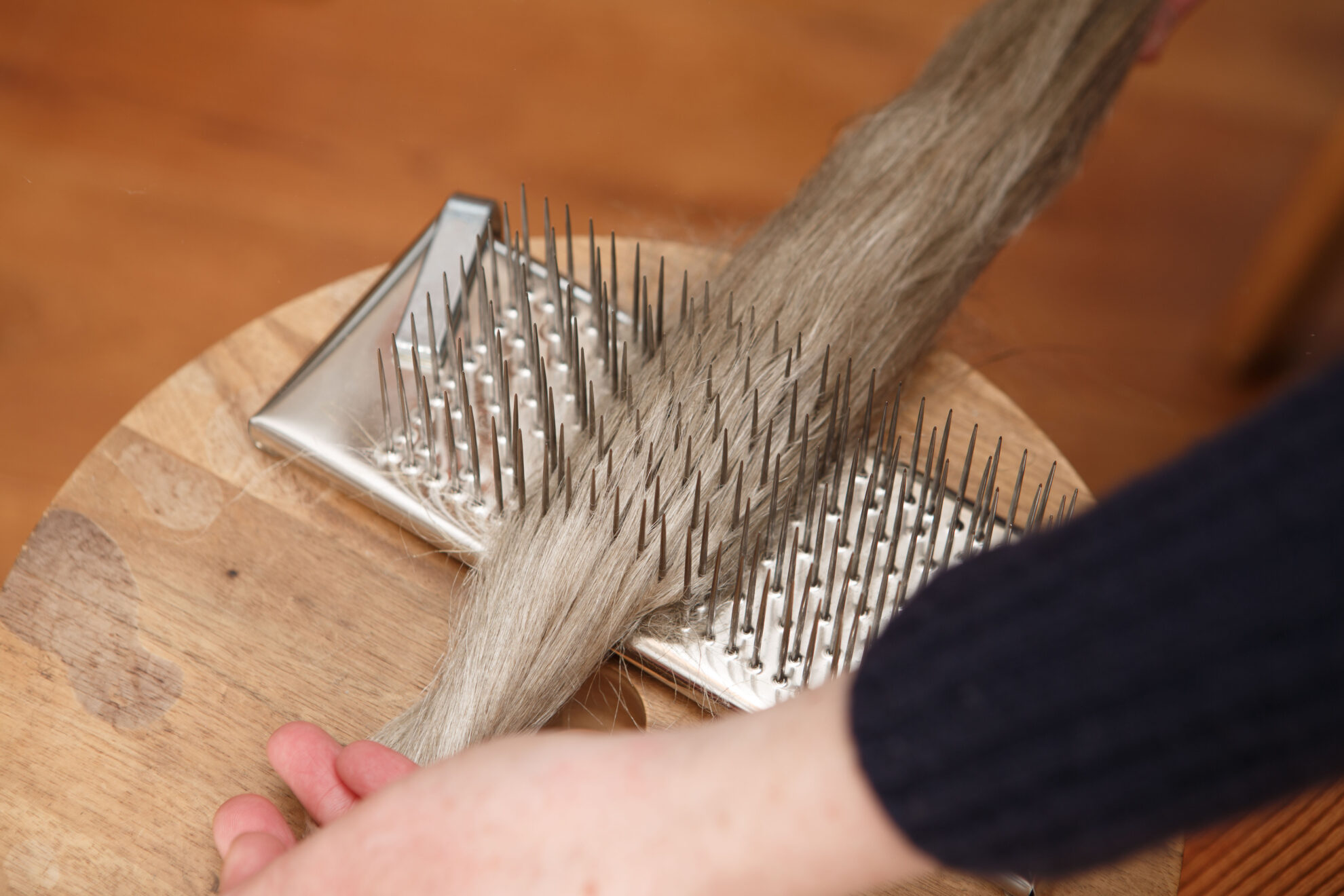

This spring Karin is going to sow flax again. She didn’t buy new seed, but is working with home-grown seed from last year. Karin: ”I still have the desire to try other varieties as well. For example, a variety with popping seed balls.” Karin laughs: ”Tricky though, because when they ripen they pop open and your seed is gone. So you have to respond to the flax even better.”
Everything is connected
I’m curious to hear what surprised her most about flax. Karin laughs: ”One thing? I’m still discovering all sorts of things! I was at De Schatkamer in the Sint-Servaasbasiliek the other day. There I saw a large linen cloth from the 12th century. It was made of such fine linen with motifs woven into it. How did they do that back then? But also the realization that we lost that knowledge. That already in 1809 a call came asking: how do they make such fine flax there, because we don’t know anymore.”
On her land, Karin grows various dye plants in addition to flax, including woad and madder. This, too, involves a lot of choices and patience. The orange roots of the madder have to grow for at least three years, but produce a beautiful red color. From the yellow flowering woad comes an intense blue color. For the final result, the processing of the linen makes a big difference Karin explains: ”When flax is retted in water, which is not actually allowed anymore, you get much paler flax than when you dew-root (on the field). This gives a much grayer flax. If you want to dye, your starting color affects the result.”
So Karin’s research goes far beyond sowing and harvesting the flax. Many factors, sometimes beyond her control, affect the process. Karin: ”At the Zeeuws Museum, I had the opportunity to study the collection of linen shirts. In this way I am also gaining knowledge. Of the cultivation and the choices involved, but also from the other side of the processing. Everything is connected and that’s what I find so interesting. This used to be quite separate in specializations, now I’m doing it all in one person.”
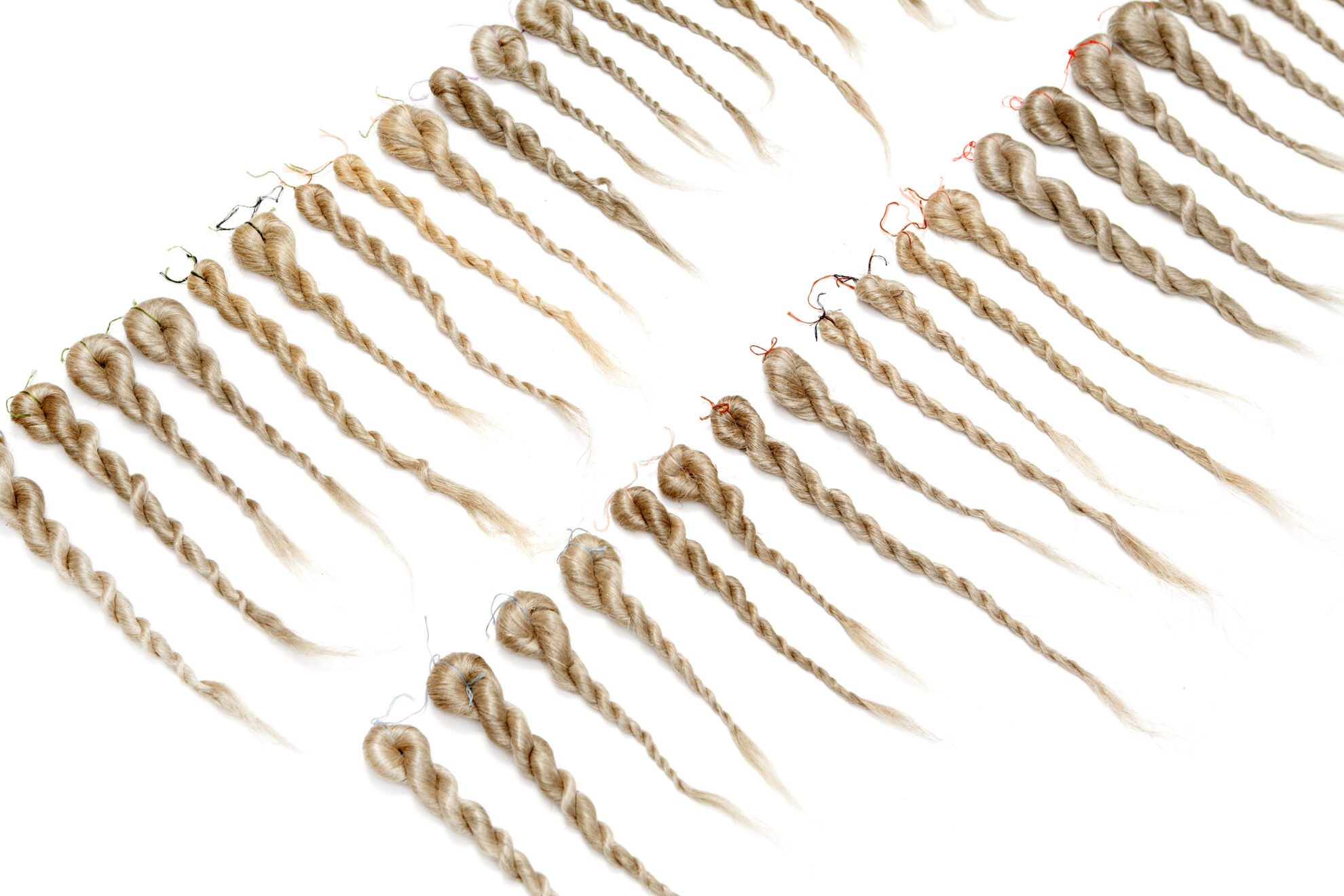
Abundance
Besides an exploration of flax, Karin’s research is about being fascinated by and loving her surroundings and rediscovering the things we have lost over the years. Her research also gets me thinking. Aren’t we, with our pursuit of productivity, efficiency and profit, losing our intrinsic curiosity and are we asking ourselves the right questions? And in the storm that life sometimes is, how do we make sure we don’t lose sight of the small wonders? This spring, I will be sowing flax myself. Maybe here is where I’ll find my answers.
I wonder what the research has brought Karin. Karin: ”The admiration for all the work they used to do. The fine spinning that they used to do, I will never match. But also the richness of what is possible. Nowadays we buy almost everything in stores, but there’s so much more possible than what you see there. With the things that grow directly in your environment or the things you throw away in your kitchen. For example, pomegranate peels, a huge source of tannin that you need for dyeing. And pruning waste from an apple tree. The bark of the apple tree also contains dyes. But also consider acorns, alder cones and walnut shells. Your creativity is greatly stimulated by that.”
Finally, I ask her if she has any tips for those who will be sowing flax themselves. Karin: ”Look at it every day and react to what you see happening. So if there are a lot of weeds in between, take out weeds. Or if the mice come by, they love the germinating seed, see if your seeds are still in the ground. If there has been a storm, bring everything up and don’t leave it. And when the flowers bloom, be sure to go look in the morning!”

Flourishing with flax
Flourishing with flax
How an ancient crop can help us re-root
Text: Iris te Wieske
Several new collections every year and sale at the end of each season. Resisting rapidly changing trends and cheap(er) products can be quite difficult. Believe me, I know. When I bought my first clothes with my allowance, I didn’t really think about how and under which conditions they were made. That changed when I started studying Fashion & Branding, and learned about the textile supply chain. But the biggest change came when, years later, I started my own vegetable garden.
Toward the end of each the year, the seed catalog arrived. We thought about what we wanted to grow next year, made a layout for the garden and prepared the soil. In the spring, we carefully sowed the seeds. The seed trays on the windowsill, waiting for the first rays of sunlight. On our knees we would pull out the weeds, and in dry periods we would cycle to the garden twice a day to water everything. While some crops grew beyond expectations, others failed completely. No, I didn’t always feel like going. But when we could harvest kilos of strawberries, spinach and rhubarb and hand them out to friends, family and neighbors, it was such a rich feeling!
Although it may not always be realistic in this day and age, and we should be grateful for all the technical advances, these experiences can hold a lot of value: maintaining a vegetable garden, making your own garment or piece of furniture, returning to ancient knowledge and working with your hands and the elements. It creates a connection with yourself and your environment. An opinion I share with Willemien Ippel, co-founder of Crafts Council Netherlands and The Linen Project.
Willemien: ”We are no longer used to depending on the weather for our clothes. The same goes for our food. This uproots us, and that’s a big motivation for me.”
The Linen Project
The Linen Project started in 2018 with a study into the economic viability of small-scale, local flax cultivation and linen production in the Netherlands. This resulted in the first Dutch organic flax harvest since the 1950s. The project also involves social, ecological and cultural aspects. Within The Linen Project, the Linen Stewards form the community. It is a group of 30 people who have collectively committed themselves to the cultivation of flax. Together they bear responsibility and care for the entire process from seed to end product.
Willemien: ‘’The Linen Stewards are also referred to as linen evangelists. We preach awareness around the whole process. Everyone who has participated, thinks about textiles and clothing in a different way afterwards.”
In addition to practical experience, knowledge also creates more connection. A great reason to learn more about flax.
A golden history
Flax is an ancient crop that provides the raw material for linen. Flax cultivation has a long and rich history and once experienced golden years in the Netherlands. Cultivation and applications were not only economically important at the time. Throughout history there are countless known and less known stories that also reveal the cultural and spiritual significance of linen.
For the oldest known story about flax, we have to go back in time some 30,000 years, to a cave in Georgia. Here archaeologists found the first dyed flax fibers. But much better known is the use of linen by the Egyptians. In the Nile Valley, plenty of flax was grown to make fabrics and garments. From the fineness of the fabric, the social class of the wearer could be deduced. The fabric also played an important role in religious practices. For example, the Egyptians used linen for mummification. Here the fabric became a sacred symbol, associated with purity and rebirth. Similar elements can be found in Christianity, where the Bible describes Jesus’ body being wrapped in linen.
Then a little closer to home. In the Netherlands, flax has been grown since the Middle Ages. Flanders was the center of flax cultivation at that time, but flax was also grown in abundance in Zeeland. You can still walk across the Vlasmarkt in the center of Middelburg, and you will find several traditional flax barns here.
Linen was often grown in communities. Especially in poorer communities, linen was of great (economic) importance. For example, for the (bridal) trousseau, which was sometimes started as early as age 12. Flax was not an easy crop. Cultivation required a great deal of attention and skill, which meant that flax growers used to be held in high esteem. Also, both growing and processing were very labor intensive. And that’s not much different today.
Willemien: ”Flax is also called ‘het juffertje’ of agriculture, because it is such a vulnerable crop. We have experienced several times that wind and rain have thrown a spanner in the works. A heavy downpour can cause an entire field full of flax stems to slam to the ground.”
Despite this labor-intensive process, linen was for a long time more affordable than cotton. It was used for clothing, but also for a variety of other household textiles such as bedding and tablecloths. The finest linen was given a place in the linen closet, once the showpiece of the house.
The rise of cotton
Although the cultivation of flax once flourished in the Netherlands, during the 19th century it increasingly disappeared into the background due to the large-scale import of cotton. The processing of flax largely shifted to Asia, the golden yellow fields slowly disappeared from the landscape, and with this, the in-depth knowledge of the crop also decreased. Nevertheless, linen originating from flax from northwestern Europe is still considered the best in the world and the Netherlands, Belgium and France are today the largest producer. However, the processing of this European flax often takes place far out of our sight, in low-wage countries.
Most of our clothing today is made from cotton and polyester. Whereas linen thrives in our climate and soil, the cotton plant only grows outside Europe. But the growing demand for sustainable and locally grown raw materials, is making flax and its related crafts relevant again.
Willemien: ”We are no longer used to having so many crafts around a crop. From the seed, to the farmer, those who harvest, the spinners and weavers.” It made the fabric valuable, so people used it sparingly.
From seed to flax fiber in 100 days
The flax plant (Linum usitatissimum) is an annual plant that grows from seed to fine, green flax stalk in 100 days. It can grow about 70 to 90 cm tall. Flax grows from linseed which must be sown in the spring. According to an old peasant wisdom, preferably on the hundredth day of the year (around April 10).
By the end of May, the flax field turns into a beautiful sea of green stalks with tiny blue flowers. If you want to enjoy this magical sight, you have to be quick: each flower blooms for only a single morning before turning into a seed capsule. In July, when the tiny seed capsules have been formed, the stalks turn from green to golden yellow and the leaves begin to fall from the stalks, the flax can be harvested. In order to achieve maximum fiber length, the flax stalks are pulled out of the ground by hand in small bunches. Because the fiber extends to the tip of the root, the plant is harvested with root and all. A tough job that requires frequent breaks. Then, the stalks have only been harvested. Wondering what happens after the harvest?
> We made a video series about the whole process from flax to linen
The most useful species
The Latin name of the flax plant, Linum usitatissimum, means most useful linen. A fitting name because flax is a versatile crop that can be used in its entirety. It’s best-known use is of course linen, which is made from the plant’s fibers. But the same fibers can also be made into rope or paper. The plant’s seeds are used to make linseed oil or extracted for sowing. Flax is also increasingly used for various applications in construction. For example, the shorter fibers are processed into insulation material.
Flax also has many ecological advantages. Unlike cotton, it requires little water and pesticides to grow. This contributes to increased biodiversity. In addition, the plant stores CO2 and its deep roots provide loose and healthy soil.
Let’s re-root ourselves
Maybe you sleep under a linen bed cover, or your favorite blouse is made of linen. Now that you know more about this ancient crop, I hope you will look at these items in a different way. How wonderful it would be if, through a combination of knowledge and practice, we re-root ourselves. That we reconnect with the ground beneath our feet and the origin of the products we surround ourselves with every day. That we cherish them because of the extraordinary stories they hold. And then, maybe, the linen cabinet will once again become a symbol for the way we care.
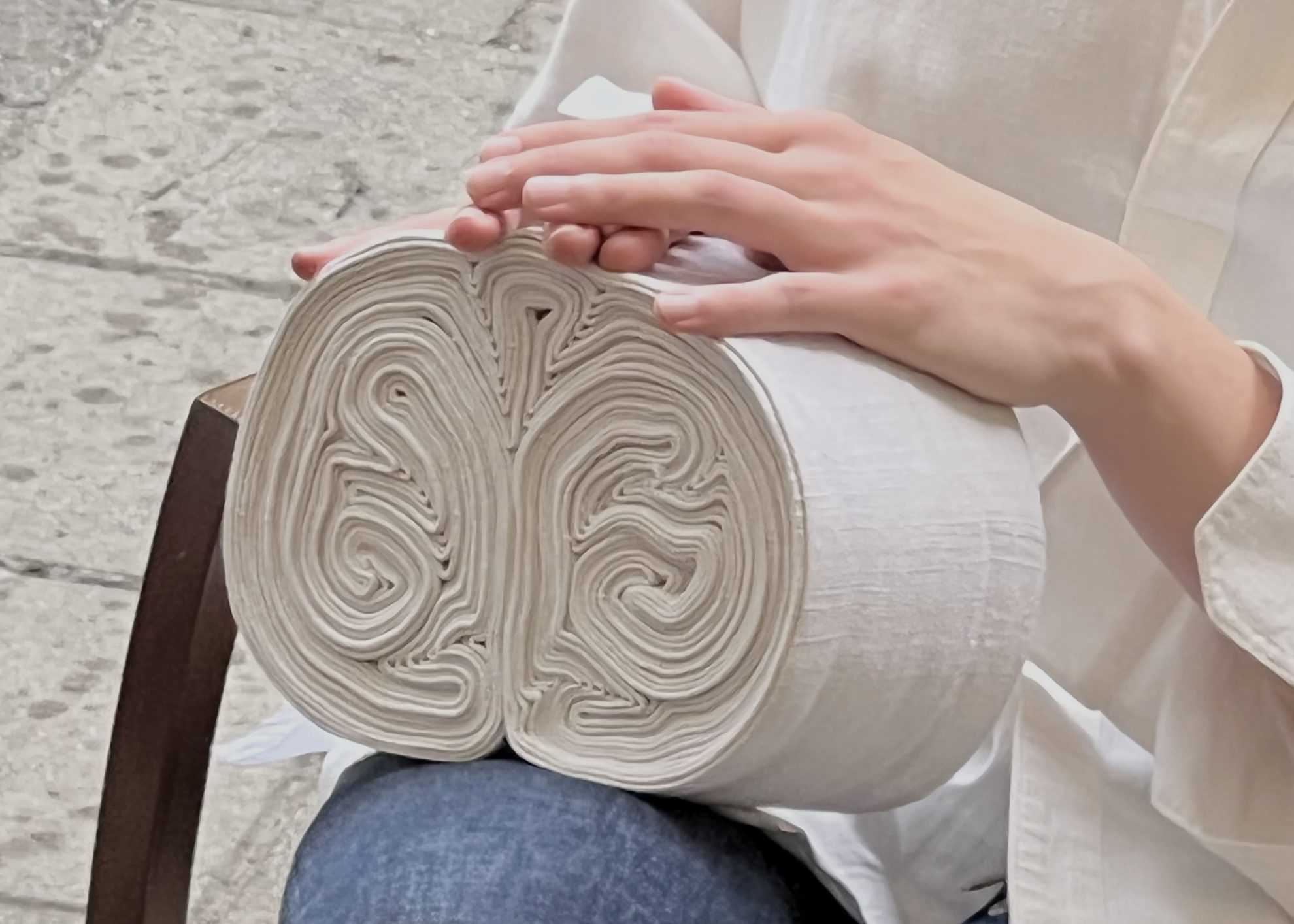
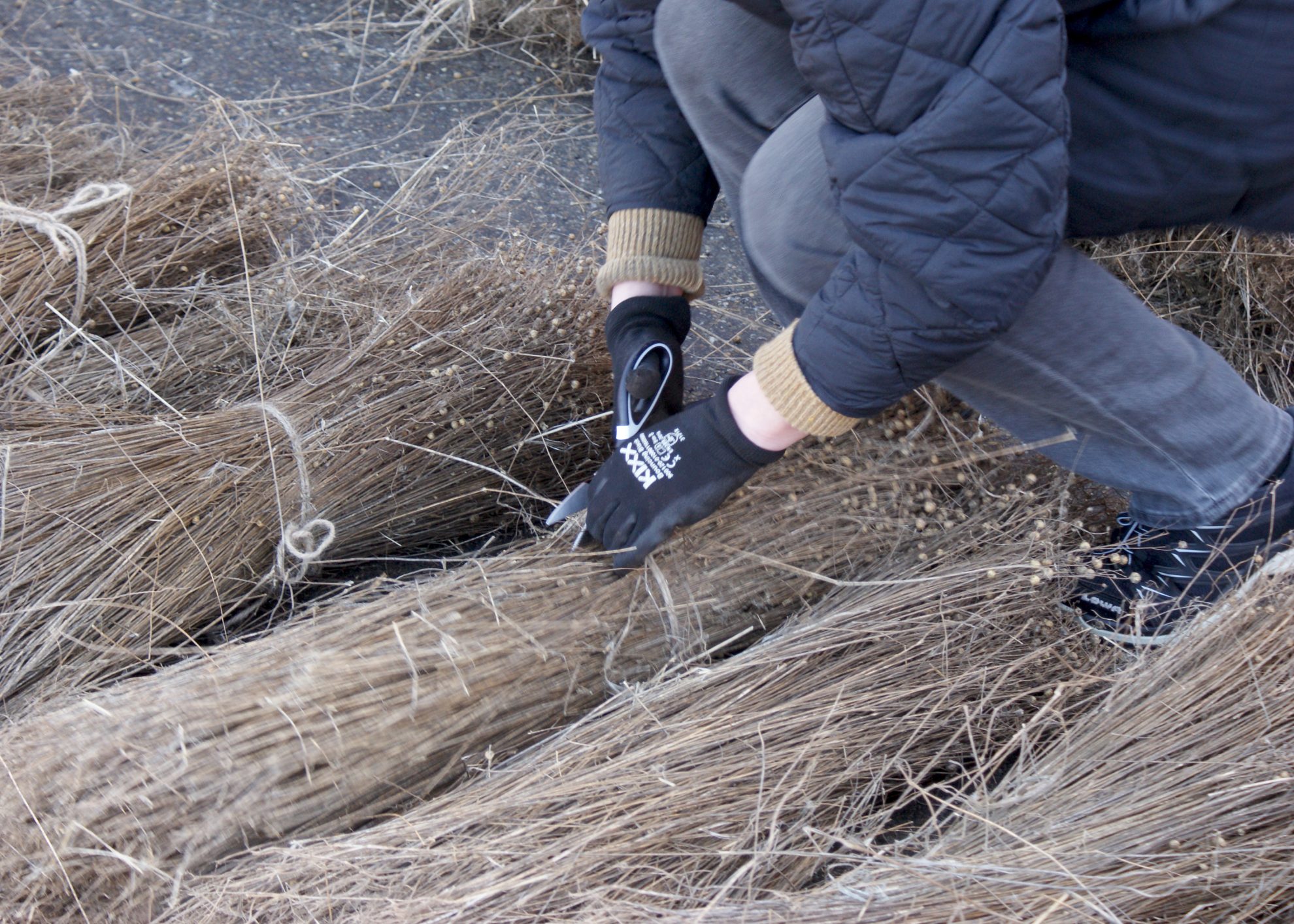
An alternative to the rampant fashion industry grows in this Gelderland field
In the summer of 2022, Pascale Gatzen joined Emy Demkes, Consumption correspondent for Dutch online journalistic platform De Correspondent, at the Linen Stewards’ flax field at De Horsterhof for a conversation about alternative economic models that prioritise the wellbeing of people and the earth. Emy’s reflections on their conversation, including The Linen Project’s activities and their wider relevance, are published in this article. Photographer Heidi de Gier also visited the flax field and got acquainted with the then present Linen Stewards; her accompanying images document various outcomes of the processes and harvests so far.
Read Op deze Gelderse akker groeit een alternatief voor de voortrazende mode-industrie, article text in Dutch.
What a field full of flax can teach us about a fairer economic system
Emy Demkes, Consumption correspondent for online journalistic platform De Correspondent, met with The Linen Project core team during the Linnen Kavel introduction days in spring 2022. In this newsletter, a prequel to her article on The Linen Project, Emy shares her initial impressions of the potential of a local linen economy, with a view to current social, economic and environmental developments and the recurring call for systemic change.
Read Wat een veld vol vlas ons kan leren over een eerlijker economisch systeem, newsletter text in Dutch.
Following nature’s rhythm: a season on the field as a Linen Steward
Day by day encounters in collectively caring for the plants that will clothe us. Melanie Bomans reflects on her experience as a Linen Steward in this contribution to Australian-based Garland Magazine, March 2021 edition, Stewardship: The relationship between humans and nature. Read the full article alongside other inspiring perspectives on custodianship and craft.
the linen project is
farm to textile, fibre farming, bast fibres, agriculture, biodiversity, soil health, permaculture, nature inclusive, circular, local production, community development, co-creation, participatory design processes, the linen stewards, peer governance, community economies, commoning, interdependence, degrowth, fibre sovereignty, self-sufficiency, narrative, inspiration, craft, textiles, together, access, care, mutuality, exchange, joy
